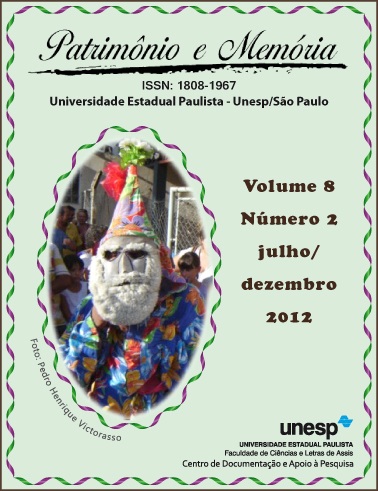Epistolary Dialogues and Construction of a "Field"
the writing of folklore in Goiás in institutional correspondence (1948/1978)
DOI:
https://doi.org/10.5016/pem.v8i2.3657Keywords:
Folklore, Goiana Folklore Commission, Institutions, Intellectual field, Epistolary correspondenceAbstract
The folklore institutionalization movement in Brazil began with the Folklore National Commission, established in 1947. In the following years, this movement developed through various regional committees responsible for creating a large national network of folklorists, which, inspired by the ideals of the mission, promoted events, surveys and research on folklore, whilst writing several texts on the cultural life of the Brazilian states. This paper examines the work and activities of the Goiana Folklore Commission that was established in 1948. In addition to this an analysis is provided of the epistolary correspondence exchanged between secretaries of the regional commission and of the national commission, whilst trying to understand the processes of folklore construction as an “intellectual field”, through the subjectivity of their authors. The relationship of this movement with the cultural policies from the year 1940 to 1980 are also examined, at a time when it was considered that people, their practices and traditions should be protected and rescued in order to form a national identity.
References
BOURDIEU, Pierre. Coisas ditas. São Paulo: Brasiliense, 1990.
______. Campo do Poder, Campo Intelectual e Habitus de Classe. In: MICELI, Sérgio (org.). A Economia das Trocas Simbólicas. 6ª ed. São Paulo: Perspectiva, 2005.
BURKE, Peter. Cultura Popular na Idade Moderna. São Paulo: Companhia das Letras, 1989.
CHARTIER, Roger. História Cultural: entre práticas e representações. São Paulo: Difel,1988.
FERNANDES, Florestan. O Folclore em Questão. 2 ed., São Paulo: Hucitec, 1989.
GOMES, Ângela Maria de Castro. Introdução. In: ______. Escrita de Si, Escrita da História. Rio de Janeiro: Editora da FGV, 2004. p. 7-24
GOVERNO DO ESTADO DE GOIÁS. Secretaria de Educação e Cultura/GO, Portaria nº 4, de 07 de fevereiro de 1953, de Cônego José Trindade da Fonseca e Silva. Goiânia, GO. COMISSÃO NACIONAL DO FOLCLORE. Modelo de Estatuto para as Comissões Estaduais de Folclore. [197-].
MUSEU DA IMAGEM E DO SOM DE GOIÁS (Cadernos de Fotografia). Revendo Regina Lacerda. Fotobiografia. AGEPEL, Goiânia, 2003.
NEDEL, Letícia Borges. Um Passado Novo para uma História em Crise: Regionalismo e Folcloristas no Rio Grande do Sul (1948-1965). 2005. Tese (doutorado em História) – Universidade de Brasília, Brasília, 2005.
ORTIZ, Renato. Cultura Popular: Românticos e Folcloristas. São Paulo: Olho D’agua, [1992?].
TREBITSCH, Michel. Correspondance d’intelectuels: le cas de lettres d’Henri Le Febvre à Norbert Guterman (1935-1947). Les Cahiers de l’IHTP, n. 20, mars 1992.
TELES, Gilberto Mendonça. A Poesia em Goiás. Goiânia: CEGRAF, 1983.
VILHENA, Luís Rodolfo. Projeto e Missão. O movimento folclórico brasileiro (1947-1964). Rio de Janeiro: Funarte / Ed. Fundação Getúlio Vargas, 1997.
Downloads
Published
How to Cite
Issue
Section
License
Copyright (c) 2012 Patrimônio e Memória

This work is licensed under a Creative Commons Attribution 4.0 International License.
All the content of the journal, except where noted, is licensed under a Creative Commons BY attribution license.


